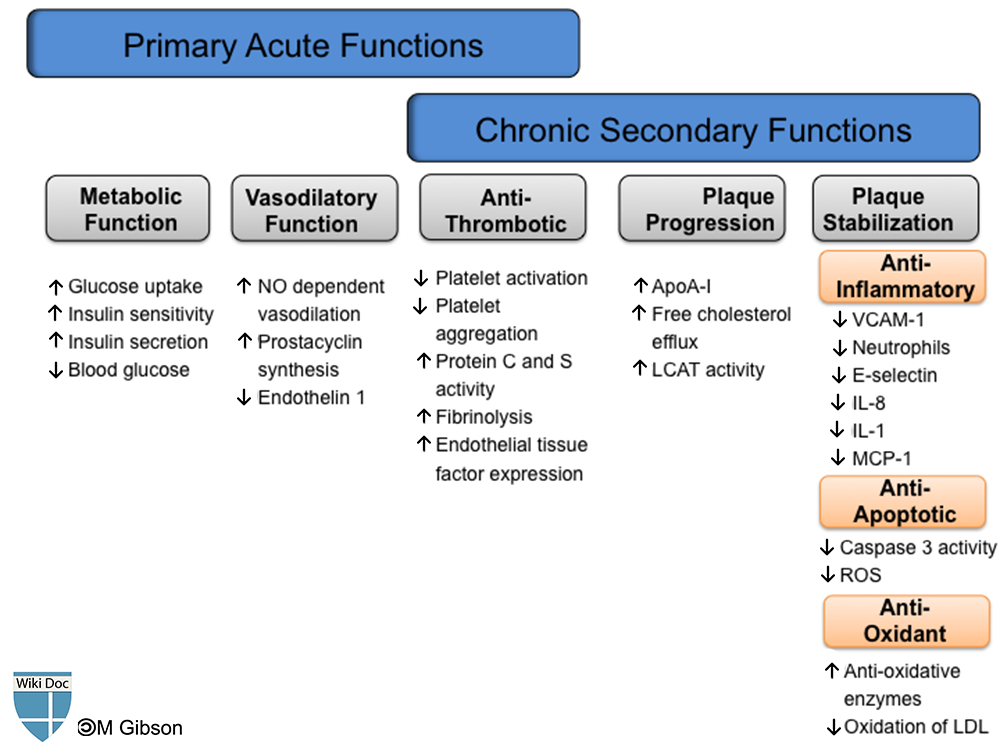WBR0555
| Author | [[PageAuthor::Ayokunle Olubaniyi, M.B,B.S [1]]] |
|---|---|
| Exam Type | ExamType::USMLE Step 1 |
| Main Category | MainCategory::Biochemistry |
| Sub Category | SubCategory::Cardiology |
| Prompt | [[Prompt::Increasing the serum level and functionality of HDL has been demonstrated to reduce the cardiovascular risk in patients with acute coronary syndromes.
What is the main mechanism involved in the execution of this function?]] |
| Answer A | AnswerA::Synthesis of prostacylin |
| Answer A Explanation | AnswerAExp::HDL was found to increase the forearm blood flow in diabetic patients with endothelial dysfunctions. This is carried out by its effect on vasodilation and prostacyclin synthesis |
| Answer B | AnswerB::Caspase 3 activity |
| Answer B Explanation | AnswerBExp::Caspase 3 initiates apoptosis (programmed cell death) in cells. HDL, through its effect on caspase 3, prevents apoptosis in cells. It also lowers the generation of reactive oxygen species (ROS). |
| Answer C | AnswerC::Protein C and S activity |
| Answer C Explanation | AnswerCExp::HDL functions in preventing thrombus formation in the arteries by effect on platelet activation and aggregation, increasing protein C&S activity, increasing fibrinolysis, and endothelial tissue factor expression. |
| Answer D | AnswerD::Free cholesterol efflux from cells |
| Answer D Explanation | [[AnswerDExp::The reverse cholesterol system involves:
1) Nascent HDLs, secreted in the liver, takes up free cholesterol from the cells and arterial wall mainly through the ABCA1 and scavenger receptor s 2) LCAT catalyses the esterification of the free cholesterol in the HDLs, and it is also responsible for the maturation of the nascent HDLs into mature HDLs. 3) Mature HDLs are transported to the liver where the enzyme CETP transfers cholesterol from HDL to the apo B–containing lipoproteins e.g., very low-density lipoprotein (VLDL) or intermediate-density lipoprotein (IDL) to be taken up by the liver. 4) The cholesterol free HDLs get degraded by triglyceride lipases releasing new HDLs into the circulation which either picks up more free cholesterol to continue the cycle or gets excreted by the kidneys.]] |
| Answer E | AnswerE::Increasing insulin secretion and sensitivity |
| Answer E Explanation | AnswerEExp::HDL increases insulin secretion through AMP-activated protein kinase in skeletal muscle, thus, mediating glucose metabolism especially in type 2 diabetic patients. |
| Right Answer | RightAnswer::D |
| Explanation | [[Explanation::HDL is important in the efflux of free cholesterol from cells and arterial wall. It does this through the reverse cholesterol transport system, consisting of receptors such as ABCA1, scavenger receptors, and enzymes e.g., lecithin:cholesteryl acetyltransferase (LCAT) and cholesterylester transfer protein (CETP). Other functions of HDL include anti-coagulant, anti-inflammatory, anti-apoptotic, anti-oxidant, metabolic, and vasodilatory functions.
 Educational Objective: HDL is involved in atheroprotection which involves the extrusion of free cholesterol from cells mainly through the reverse cholesterol system. Reference: http://www.wikidoc.org/index.php/High_density_lipoprotein_physiology |
| Approved | Approved::No |
| Keyword | WBRKeyword::HDL, WBRKeyword::HDL physiology, WBRKeyword::HDL functions |
| Linked Question | Linked:: |
| Order in Linked Questions | LinkedOrder:: |